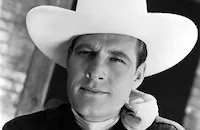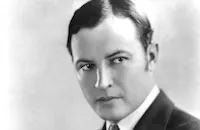Green Eyes
Brief Synopsis
Cast & Crew
Richard Thorpe
Shirley Grey
Charles Starrett
Claude Gillingwater
John Wray
William Bakewell
Film Details
Technical Specs

Synopsis
As guests of millionaire Stephen Kester unmask themselves during a costume party, their host, his own face covered by a green-eyed Chinese mask, is found stabbed to death by Mrs. Pritchard, his secretary's wife. While the police are notified, Kester's granddaughter Jean, and Cliff Miller, who had slipped away from the party after cutting Kester's telephone wires and the guests's automobile ignition wires, drive down the highway together. They are soon stopped by the police, however, and are returned to the Kester mansion, where Inspector Crofton and his assistant, Regan, are conducting a murder investigation. The policemen question everyone in the house, including Jean, Cliff, Mr. and Mrs. Pritchard, detective story writer Bill Tracy and businessman Roger Hall, both guests of Kester's, and determine that Jean had been with her grandfather just before his murder. With Tracy's wise-cracking help, the detectives also determine that Hall, who had come to see Kester from Mexico, where Kester had a mining interest and where Jean had once lived with her now deceased parents, had fought bitterly with Kester before the party. A second interrogation of Jean reveals that she had fought with Kester over her relationship with Cliff, and that Kester had terminated her allowance and had cut her out of his will. After determining that Cliff had cut the ignition wires and that Jean's $1,200 allowance was stolen from Kester's safe, Crofton arrests Cliff and Jean on suspicion of murder. However, when Hall is found dead, an apparent victim of suicide, Tracy, who is in love with Jean, questions a broker about Kester's stock holdings in Hall's Mexican mine. He then takes Kester's financial "black book" to a chemist and discovers that ledger figures have been altered. At the Kester mansion, a letter to Jean that Hall had written just before his death is read aloud. The letter reveals that, because she had married "beneath herself," Kester had refused to help Jean's mother in Mexico after Jean's father had died. In the letter, Hall, who had been in love with Jean's mother, accuses Kester of causing her subsequent death and confesses his intention to kill Kester and then himself. Although Crofton and Regan are convinced that Hall is the killer, Tracy, aided by a pair of green glass eyes that he had found in the Kester furnace, determines that Pritchard, who had been embezzling Kester's money for years, had impersonated Kester at the party and is the real culprit. After Mr. and Mrs. Pritchard commit suicide, Cliff and Jean resume their elopement with Tracy's blessing.

Director

Richard Thorpe
Cast

Shirley Grey

Charles Starrett

Claude Gillingwater

John Wray
William Bakewell

Dorothy Revier
Ben Hendricks Jr.
Alden Chase
Arthur Clayton
Aggie Herring

Edward Keane
Edward Le Saint

Robert Frazer
John Elliott
Lloyd Whitlock
Elmer Ballard
Crew

Film Details
Technical Specs

Quotes
Trivia
Notes
The script contained in the copyright records suggests that parts of this story were told using flashbacks. Although the general release date is listed as June 15, 1934 in Motion Picture Herald release charts, the film was not reviewed by the trade journals until several months later. Modern sources list Abe Meyer as the film's musical director, and add Frank Hagney (Policeman) to the cast. Cast credits are completed as follows by modern sources: John Elliott (Chemist), Lloyd Whitlock (Howe) and Elmer Ballard (Lenox). In addition, modern sources state the film was recorded using the RCA Victor sound system.












